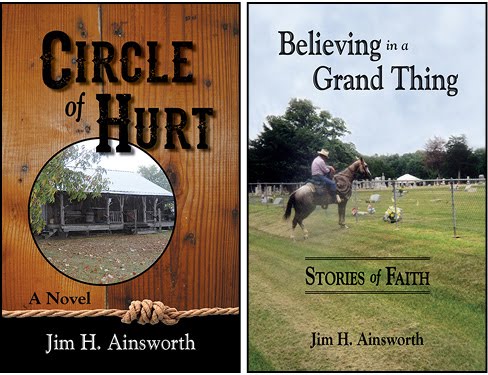Just as we thought our evening at the Western Heritage
Awards could not get any better, I heard Michael Martin Murphy (who had earlier
received an award for Outstanding Original Western Music) announce the winner
of the Chester A. Reynolds (founder of the Cowboy Hall of Fame) award. This
award is given to folks whose lifestyles best represent the ideals of the
American West. Tom Dorrance,
eighty-two at the time, took the stage to accept the award, flanked by Red Steagall.
I own Tom’s book, True Unity, and was amazed
to find myself in the same room with the man who (along with his brother Bill)
is widely recognized as the founder of the modern horsemanship movement. The
brothers were buckaroos raised on a ranch in the Great Basin.
Tom and Bill had a particularly strong influence on Ray Hunt, and Hunt’s disciple Buck Brannaman, who coached
Robert Redford in The Horse Whisperer. These
guys were practicing the gentling craft long before Monty Roberts wrote The Man
Who Listens to Horses. (I never believed much of what Roberts said in
that book and deplore the way he smeared his father’s memory. His own family
has denounced it).
And let’s not forget the presence of the spirit of William Boyd (Hopalong
Cassidy), who was inducted into the hall of great western performers. And
we’ll always remember the Sons of
the Pioneers and their performance that night. Their founding members were
inducted into the Hall of Great Western Performers. I imagined Roy Rogers
looking on and being well pleased.
Looking back on the evening, I still marvel at how fortunate
we were to be in a room so full of positive energy and accomplishment. The mood
in the room was ebullient. All the folks seemed to like each other and everyone
else. I don’t think it is too much of a stretch to say that we felt in the
presence of greatness.
But the evening was not over, not by a long shot. After the
banquet, Jan and I were touring the museum when we saw Richard Farnsworth and
Ernest Borgnine walking toward us, engaged in jovial conversation and
storytelling. As an aficionado of the Western lifestyle and Western movies, I
tried not to gush as I asked Farnsworth to sign my program. He obliged with a
smile. I still have it, of course. Someone called Borgnine away before I could
get his autograph.
Consider Farnsworth’s accomplishments. He left home at fifteen
during the Depression and found work as a stable hand in a polo barn owned by
Walt Disney. Soon after, he began riding broncs in the Southwestern rodeo
circuit. Then he worked as a stuntman for thirty years doing stunts for the
likes of Gary Cooper and Kirk Douglas and doubling for Henry Fonda, John
Ireland and Joel McCrea.
Remember the great riding done by tenderfoot Montgomery
Clift in Red River? That was due to
Farnsworth’s coaching. If you want to see the difference Farnsworth training
made, watch Clift mount and dismount in Red River, then watch Matt Damon jump down from his horse in the remake of True Grit.
Shy, unassuming and dyslexic, Farnsworth was reluctant to
take his first speaking role in 1976. Two years later, he got his first Academy
Award nomination as supporting actor for another great Western with James Caan, Comes a Horseman (Jane Fonda
notwithstanding). Then he starred in another of the greatest Westerns of all
time starring Steve McQueen as Tom Horn. Folks who have
visited our Across the Creek barn know that the movie poster hung there. It
hangs in my office now.
Farnsworth played real life train robber Bill Miner in
another great flick, The Grey Fox, and garnered
a Golden Globe nomination. And he wasn’t just great in westerns. He played a
baseball coach with Robert Redford in The Natural, starred with
Colleen Dewhurst in Anne of Green Gables
on PBS, with Redford again in Havana,
in The Two Jakes with Jack Nicholson,
and teamed with James Caan again in Misery.
In 1999, at age 79, he earned his second Academy Award
nomination, this time not for supporting actor, but for a leading role in The Straight Story.
I have thought about that evening many times, especially
when I learned that Farnsworth had cut short his battle with terminal cancer by
taking his own life in 2000. I wish I had a “do- over”, knowing what I know
now.
The lesson learned? Probably to pay better attention, absorb
life’s “moments”, and not believe in coincidences. God must have been tired
from winking so much that night. Or maybe not.


